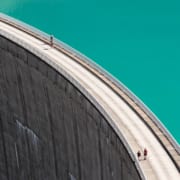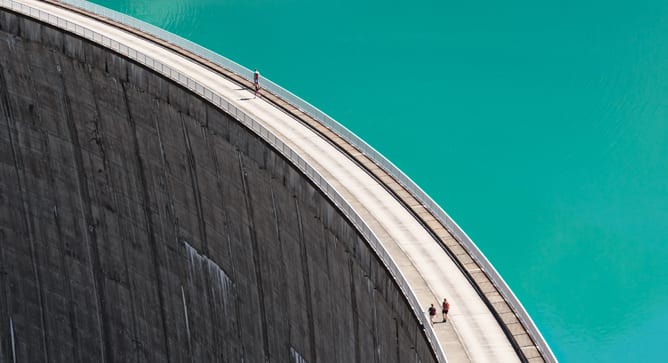News & Views, Volume 49 | The 4th Dimension: Lifecycle Assessment of Critical Structures
By: Dan Parker, PE
By analytically simulating the steps in the construction process, including the sequence of concrete placements, and tracking the history of the material behavior starting from initial placement, the potential for cracking is evaluated by comparing the time dependent stress and strains to the concrete cracking resistance and capacity.
Aging Infrastructure Issues
The infrastructure in the United States is aging and, whether publicly or privately owned, significant resources are required to repair, replace, or modernize it. Due to the high costs associated with these efforts, owners need to identify structures with high risk-of-failure consequences and find the most cost-effective solutions for rehabilitation. High consequence infrastructure includes:
- Highway and railway bridges,
- Roadways for intra and interstate transportation,
- Dams, locks, and levees for flood control and cargo transportation,
- High rise business, apartment, and condominium towers, and
- Power generation and distribution facilities for Nuclear, Fossil and Hydro utilities.
All infrastructure, is susceptible to degradation that comes with aging. The accumulation of degradation, and a structures subsequent failure, is difficult to predict due to the numerous real-world factors that influence rates of degradation. These real-world factors can lead to some structures failing prematurely and others lasting well beyond their original design life. Asset owners need to be on the lookout for:
- A structure that is nearing or has exceeded its expected design life,
- A structure that shows signs of steel corrosion, freeze-thaw damage, or concrete degradation such as alkali aggregate reaction (AAR),
- A structure that is overloaded due to an increase in auto, truck or rail traffic,
- A structure with a known design deficiency when evaluated with modern design code requirements,
- Increases in regional hazards, such as increased seismicity or increased probable maximum flood levels, and other climate change related issues.
Often, structures are kept in service beyond their original design life. Many older structures are held to a design basis, i.e. code requirements, consistent with the time the structure was designed. Evaluating older structures using current code requirements can potentially affect original safety margins both positively and negatively. Increased capacity limits can be established for steel welded and bolted connections and utilizing actual concrete compressive strengths above original design strength that may provide added safety margin. On the other hand, identifying substandard details relative to current practice, particularly concrete reinforcement detailing will reduce originally considered safety margins. Additional factors that can affect the service life of a large infrastructure projects include environmental conditions, reliability of materials, quality of construction, and loading conditions.
Throughout the country, many structures such as bridges, dams, and power generating facilities remain in active service as they approach or exceed their design (or licensed) service life. Replacement is often prohibitive for many of these structures due to cost. However, failure of these structures could have more significant consequences beyond lost revenue, including loss of life. Identifying structural vulnerabilities and designing retrofit modifications is essential to economically extending the service life of these structures.
Current Regulations
There is no single agency that oversees the various types of infrastructure within the United States. The following structures generally fall under the purview of these agencies:
- Bridges, Roadways and Railways – National Transportation Safety Board, Federal Highway Administration, State Level Departments of Transportation, and some local City Departments of Transportation
- Nuclear Facilities – Nuclear Regulatory Commission (NRC), US Department of Energy
- High Rise Buildings – State and Local City Building Departments
- Dams for Hydroelectric and Water Storage – Federal Energy Regulatory Commission (FERC), State Level Dam Safety Departments
- At a high level the different regulatory bodies have a common mission to keep asset owners accountable to maintaining the mandated level of safety for the general public. Different regulations and procedures are required depending on the type of project, owner, and overseeing agency involved.
Lifecycle of a Structure
As structures reach the end of their design service lives or are in extended service, regulators typically require asset owners to demonstrate that these structures can still maintain their functionality while posing a low risk to the public safety, regardless of expense to the owner. Thus, it is beneficial for the owner to perform maintenance to ensure safe and functional assets that are profit positive, versus the potentially large costs incurred during decommissioning, removal and remediation of project sites.
Lifecycle structural health monitoring and simulation is a methodology to track changes in a structure that occur during the structures service life. Monitoring can be performed through non-destructive examination techniques. Continuous health monitoring helps owners maintain their assets by providing a warning if a sudden change or degradation accumulation is observed. This data can feed desktop simulations which incorporate the time variable into the modeling of the asset, giving point-in-time snapshots of how the structure behaves under loading during different stages of its life.
Predicting Degradation: During Design
During the design phase, large infrastructure projects are designed for a variety of expected loads including thermal load cycles, live loads, and operational loads. Seldom is the cumulative impact of cyclic loading considered when estimating the expected service life of the structure. Incorporating transient seismic demands or some other unexpected blast, shock or impact loading in combination with the expected stress range that occurs in structural components the lifecycle endurance limit can be evaluated that may be different from originally established design basis limits. For example, concrete degradation typically manifests itself as cracking, sometimes occurring in unexpected locations. Cracking can allow water infiltration, leading to internal corrosion of reinforcement and corrosive swelling, which can weaken the structure and accelerate degradation. In cold environments repeated freeze-thaw cycles will further damage the concrete.
Cumulative damage not only affects the loss of static strength, but will also change the dynamic characteristics of the structure. This can lead to the poor performance of a structure supporting vibrating equipment or a structure subjected to seismic loading. By incorporating the effects of damage accumulation in a structural assessment, the time-varying dynamic characteristics of the structure can be identified. Incorporating these effects as part of a lifecycle assessment can provide the owner with a more realistic understanding of actual structural condition of their asset that can guide targeted remediations (i.e. mitigate excess equipment vibration) or alert the owner to an increased risk of failure under a postulated seismic event.
Predicting Degradation: During Construction
During construction of mass concrete structures large temperatures develop due to concrete curing. A Nonlinear Incremental Segmental Analysis (NISA) evaluates the thermal and static loading of young concrete to determine the potential for cracking. The propensity for cracking depends on the concrete mix, environment, and boundary conditions imposed during construction. The concrete temperature varies with time and depends on the volume and rate of concrete placement, the sequence and geometry of the placements, the concrete placement temperature and heat generation rate, and the ambient conditions. The boundary conditions imposed during construction depend on the sequence and geometry of the placements, the interaction with the foundation/formwork and any adjacent or embedded structures, and the time dependent aging, creep, and shrinkage properties of the already placed concrete lifts. To accurately account for all of these factors, the NISA must be capable of representing a coupled thermal-mechanical analysis with nonlinear material properties. By analytically simulating the steps in the construction process, including the sequence of concrete placements, and tracking the history of the material behavior starting from initial placement, the potential for cracking is evaluated by comparing the time dependent stress and strains to the concrete cracking resistance and capacity. The cracking resistance is constant for any mature concrete present, such as pre-cast concrete forms, but is time dependent for the freshly placed young concrete since the tensile strength and modulus are changing as the concrete hardens and ages.
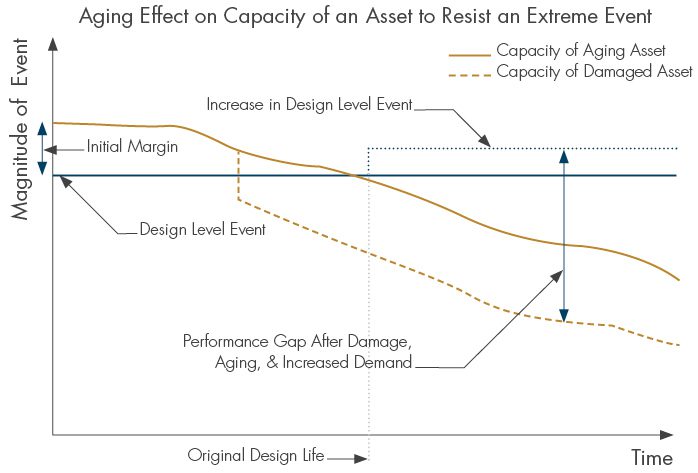
Figure 1. Aging Structures and Decreasing Margin of Safety
Predicting Degradation: During Service
A concrete structure often has predictable and repeating loading patterns over the course of its service life. For instance, a dam will reliably have high and low water levels throughout the year, though the actual levels may depend on the weather in a given year. A bridge will reliably experience different load patterns in weekday versus weekend traffic. A nuclear containment structure will experience thermal load cycles during power generation operation and shutdown for planned outages.
When looking into the future, engineers make reasonable predictions of different loading events during the initial design phase of a structure. Supplementing these prediction methods with sensor data and observed damage from onsite can help predict the time where the structure goes from safe to unsafe and remedial measures need to be taken. Sophisticated concrete material models, such as SI’s proprietary ANACAP model, can incorporate all known forms of time-based concrete behavior such as creep, shrinkage, radiological degradation, cement hydration, alkali aggregate reaction, steel corrosion, scour of concrete, and freeze-thaw cycles. This can further enhance the predicted structural performance during the design basis and extended license period of critical infrastructure as part of an asset owners risk management program.
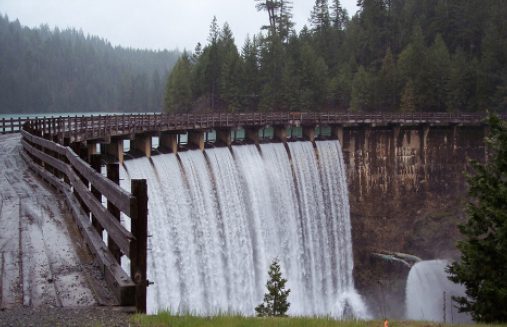
Figure 2. Concrete arch dam circa 1909, aging degradation Issues subject to increased flood and seismic demands
Time-Dependent Margin
Figure 1 shows the capacity of a structure to resist a large event (such as a flood or earthquake), and how the margin of safety changes over time. Due to safety factors built into design codes, new structures have a minimum margin of safety against failure even when accounting for small design approximations and construction errors. That margin of safety can decrease when a transient event causes damage (e.g. an earthquake, ship impact, or large flood) and as the structure ages and degrades over time. Further reductions in margin can occur as hazards can increase over time, such as when flood events become more common or when new earthquake faults are discovered from geologic mapping. Over a structure’s service life, as it accumulates damage from both transient events and aging, the available margin may be much lower than what was originally intended, increasing the risk of catastrophic failure.
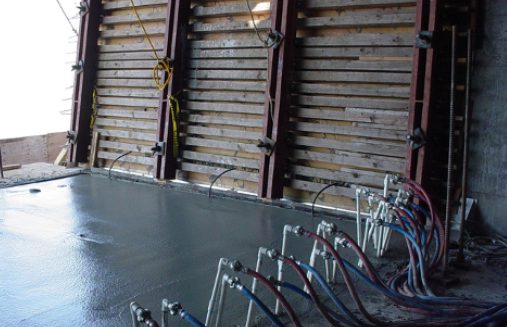
Figure 3. Concrete placement with active cooling to reduce concrete heat generation
Answering Tough Questions
Can an asset survive an earthquake or large flood event today? How big of an event can it survive? Can it survive the same event ten years from now? How does the structural performance change if we put a remedial measure into place? Without remediation, how long until the structure is unsafe? These questions can be answered with time-based structural lifecycle modeling.
Although much of the infrastructure in the USA is already functionally obsolete – or worse: at risk of catastrophic failure – much of it is effectively operating safely beyond its original design life. Finding assets with the highest risk allows owners to prioritize limited funding for rehabilitation and remediation. Lifecycle modeling helps answer those important questions when the key decisions need to be made.
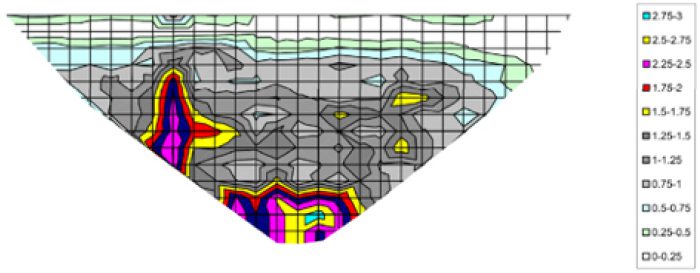
Figure 4. Example of Section Loss Contour using High Definition Scanning (HDS), Spectral Analysis of Surface Waves (SASW) and Acoustic Tomography (AT) Methods

